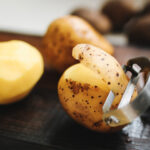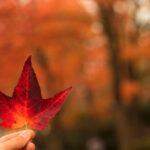Best Trees for Landscaping in the Mid-Atlantic

The Mid-Atlantic region of the United States, encompassing states like Maryland, Virginia, Delaware, and parts of Pennsylvania, offers a climate that’s both challenging and diverse. With hot, humid summers and cold, often snowy winters, it’s essential to choose trees that can thrive in this dynamic environment while adding beauty and value to your landscape. In this guide, we’ll explore a selection of the best trees for Mid-Atlantic landscaping, each offering unique characteristics, seasonal interest, and adaptability.
1. Red Maple (Acer rubrum): The Red Maple is a native favorite known for its adaptability to various soil types and moisture levels. In the spring, its delicate red flowers transform into clusters of vibrant red samaras, adding ornamental appeal. During the fall, the leaves turn brilliant shades of red and orange, providing a stunning display. Red Maples are excellent shade trees and are well-suited to the Mid-Atlantic’s climate, offering both beauty and resilience.
2. Eastern Redbud (Cercis canadensis): If you want trees that will add a pop of color amongst against a green landscape, Eastern Redbuds are an excellent choice. They are cherished for their early spring blooms, which cover their branches with clusters of rosy-pink flowers before the leaves emerge.
These deciduous trees are a standout in the landscape during the spring months. With their bright petals, they really embody the feeling of the spring season and offer a cheerful sight after the winter. They thrive in well-drained soil and partial to full sunlight, making them a perfect choice for Mid-Atlantic gardens.

3. Dogwood (Cornus florida): Dogwoods are iconic trees that enchant with their stunning white or pink blossoms in the spring. Beyond their visual appeal, they offer year-round interest with attractive foliage, vibrant fall colors, and distinctive red berries that persist into winter. Dogwoods are relatively small in stature, making them suitable for gardens of all sizes and perfect for Mid-Atlantic landscapes.
4. Tulip Poplar (Liriodendron tulipifera): Tulip Poplars, also known as Yellow Poplars or Tulip Trees, are tall and stately deciduous trees. They bear unique tulip-shaped, greenish-yellow flowers in late spring and have distinctive, four-lobed leaves. Their towering presence and impressive foliage make them a majestic addition to larger landscapes. These trees thrive in well-drained soil and full sun to partial shade.


5. American Sycamore (Platanus occidentalis): American Sycamores are recognized for their striking, mottled bark that peels away to reveal creamy white patches, creating visual interest throughout the year. In the spring, their leaves unfurl with a vibrant green hue, providing shade and beauty. They are adaptable and can tolerate wet soils, making them a valuable addition to Mid-Atlantic landscapes, particularly in areas with high moisture levels.
6. River Birch (Betula nigra): River Birches are resilient trees well-suited to the Mid-Atlantic’s varying soil conditions. They have attractive peeling bark, adding textural interest to your landscape. In the spring, they produce elegant, drooping catkins, and their glossy green leaves turn a rich golden-yellow in the fall. River Birches thrive in moist, well-drained soils and can withstand occasional flooding.
7. Bald Cypress (Taxodium distichum): Bald Cypresses are deciduous conifers with a unique appearance, featuring feathery, needle-like leaves that turn a russet-red before shedding in the fall. These trees are especially adapted to wet conditions and can thrive in areas prone to seasonal flooding. They add a touch of elegance to water features, making them ideal for ponds or wetland gardens.
8. Eastern White Pine (Pinus strobus): Eastern White Pines are evergreen giants that maintain their green foliage year-round, providing privacy and a lush backdrop to your landscape. They are known for their soft, delicate needles and tall, straight trunks. Eastern White Pines are well-suited to the Mid-Atlantic’s climate and thrive in various soil types, making them a versatile choice for many gardens.
9. Sugar Maple (Acer saccharum): Sugar Maples are renowned for their stunning fall foliage, which transforms into a brilliant tapestry of red, orange, and yellow hues. These trees are well-suited to the Mid-Atlantic’s climate, offering shade and exceptional beauty. While they prefer well-drained soil, they can adapt to different soil types with proper care.
10. American Holly (Ilex opaca): American Hollies are beautiful and well-known evergreen trees. They are adorned with lustrous, dark green leaves and clusters of bright red berries in the winter, making them a standout in the snowy Mid-Atlantic landscape. These trees are adaptable to various soil types and thrive in full sun to partial shade. They are also beneficial for wildlife, attracting birds with their berries.

11. American Elm (Ulmus americana): American Elms are classic shade trees known for their iconic vase-like shape and arching branches. While they faced challenges from Dutch Elm Disease, resistant cultivars are available, making them a viable choice for Mid-Atlantic landscapes. These trees provide ample shade and are well-suited for larger yards or public spaces.
12. Eastern Hemlock (Tsuga canadensis): Eastern Hemlocks are evergreen conifers known for their graceful, pendulous branches and fine, dark green needles. They add year-round greenery to the landscape and are ideal for creating privacy screens or windbreaks. These trees thrive in moist, well-drained soils and partial to full shade, making them suitable for gardens with limited sunlight.
13. Kentucky Coffeetree (Gymnocladus dioicus): Kentucky Coffeetrees are unique deciduous trees with compound leaves and distinctive, large, brown seed pods. Their fern-like leaves turn a golden-yellow in the fall, providing a burst of color. These trees are adaptable to different soil types and are drought-tolerant once established, making them suitable for Mid-Atlantic gardens.
14. Witch Hazel (Hamamelis virginiana): Witch Hazels are deciduous shrubs or small trees that stand out with their fragrant, spidery blooms that appear in late winter to early spring, even before their leaves emerge. These trees are well-suited to the Mid-Atlantic’s climate and provide interest during the colder months. They thrive in well-drained soil and partial shade.
15. Sweetbay Magnolia (Magnolia virginiana): Sweetbay Magnolias are small, evergreen trees with glossy leaves and fragrant, creamy-white flowers that bloom in the summer. They are well-suited to the Mid-Atlantic’s humidity and are perfect for gardens where you seek a touch of elegance and fragrance.
16. Eastern Red Cedar (Juniperus virginiana): Eastern Red Cedars are small to medium-sized evergreen trees that thrive in a variety of soil types. They are known for their attractive blue-green foliage and provide year-round color and interest to your landscape. These trees are also highly adaptable and can withstand the Mid-Atlantic’s climate.
17. American Hornbeam (Carpinus caroliniana): American Hornbeams, also known as Musclewood or Blue Beech, are small to medium-sized deciduous trees. They have distinctive, fluted bark that resembles flexed muscles, adding unique texture to your garden. These trees are shade-tolerant and are perfect for woodland gardens or as understory trees.
18. White Oak (Quercus alba): White Oaks are large deciduous trees known for their impressive size and iconic lobed leaves. They are slow-growing but long-lived and can provide shade for generations. These trees are ideal for larger properties and can tolerate a variety of soil conditions.
19. Sweetgum (Liquidambar styraciflua): Sweetgums are medium to large deciduous trees recognized for their distinctive star-shaped leaves and spiky, spherical fruit. In the fall, their foliage turns vibrant shades of red, orange, and purple, creating a striking display. These trees are suitable for well-drained soils and provide both shade and ornamental value.
20. White Dogwood (Cornus florida): White Dogwoods are similar to their pink-flowering counterparts but offer pure white blossoms in the spring. They are compact trees that fit well in smaller gardens or as focal points in larger landscapes. Their ornamental appeal extends throughout the year with attractive foliage and red berries.
21. Black Gum (Nyssa sylvatica): Black Gums, also known as Black Tupelos, are medium-sized deciduous trees with glossy green leaves that turn brilliant shades of red and purple in the fall. They are tolerant of wet soils and can be used near ponds or in rain gardens, providing both beauty and ecological value.
22. American Chestnut (Castanea dentata): American Chestnuts trees were once dominant in Eastern forests but were decimated by chestnut blight. However, efforts to reintroduce blight-resistant varieties offer hope for these majestic trees. Their nuts are beloved by wildlife, and they provide valuable timber. They also have a fun and beautiful look with their bright green chestnut pods.

23. American Linden (Tilia americana): American Lindens, also known as Basswoods or American Beeches, are medium to large deciduous trees. They produce fragrant, pendulous clusters of pale yellow flowers in the summer, attracting pollinators. Their heart-shaped leaves and attractive form make them a lovely addition to gardens.
24. Northern Catalpa (Catalpa speciosa): Northern Catalpas are medium-sized deciduous trees with large, heart-shaped leaves and showy clusters of white, trumpet-shaped flowers in late spring. These trees are highly adaptable and provide unique visual appeal.
25. Eastern Hophornbeam (Ostrya virginiana): Eastern Hophornbeams are small to medium-sized deciduous trees with attractive, serrated leaves and distinctive hop-like fruit clusters. They are well-suited to woodland gardens or naturalized areas.
It’s essential to recognize that local temperatures, soil conditions, and other environmental factors can significantly impact the success of plants in your specific area. While this article provides a general guide to trees suitable for the Mid-Atlantic region, we strongly advise readers to conduct additional research tailored to your specific geographic location.
Consulting with a professional horticulturalist or landscaper who understands the unique characteristics of your region can ensure that your plant selections are well-suited to your local climate and soil conditions. Gardening success often relies on a combination of knowledge, local expertise, and careful planning, so please consider seeking professional guidance for the best results in your landscaping endeavors.
Browse other landscaping guides from Dwell Adore.
Home Gadgets & Appliances
- Choosing a Refrigerator: Door Layouts & Sizes

- Dishwasher Types: Benefits, Drawbacks & Considerations

- Washing Machine Guide: Which Is Best for You?

- Ultimate Guide to Blenders

Health & Wellness
- Resistant Starch Benefits, Foods & Types

- Types of Meditation: Finding Inner Peace & Clarity

- Quotes About Change & Life Transitions

- How to Stop Drinking Soda When You’re Addicted





